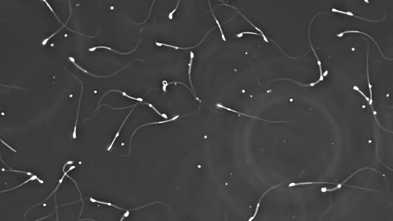A recent study led by researchers at the University of Newcastle has highlighted a concerning link between environmental pollutants and male infertility. The investigation, which involved examining the effects of PFAS—a group of harmful chemicals often referred to as “forever chemicals”—found that exposure significantly reduced sperm production and testosterone levels in mice.
In the study, scientists discovered that sperm production in male mice exposed to PFAS at levels comparable to contaminated groundwater in Williamtown, near Newcastle, was markedly affected. These findings raised alarms about the potential implications for human reproductive health, especially given the declining sperm counts observed globally.
Understanding the Sperm Count Crisis
According to Brett Nixon, a professor at the University of Newcastle, humans are less efficient at producing sperm compared to many animals. For instance, a ram can ejaculate about 100 billion sperm, while a human male produces around 100 million. Even more striking, the common fruit fly produces sperm that measures six centimeters in length—approximately twenty times its body size. In mice, nearly all sperm produced are viable, contrasted with only 4 percent of human sperm meeting the criteria for fertility.
Despite the alarming statistics, the causes of male infertility remain largely unexplained. Nixon’s latest research, which gained attention this week, suggests that environmental factors, particularly a mix of air pollution, microplastics, and endocrine-disrupting chemicals, are contributing to the decline in sperm quality and quantity.
The study’s findings align with earlier observational data linking certain environmental toxins to reduced sperm counts in humans, although the evidence remains inconsistent. Nixon emphasizes the need for further research to determine whether similar changes occur in the human population. He notes an ethical challenge: conducting randomized controlled trials exposing humans to PFAS is not feasible.
Evidence of Environmental Influence
Nixon subscribes to the “Sperm Count Decline hypothesis,” which posits that sperm counts and quality have decreased by over 50 percent in the past five decades. This theory is supported by influential meta-analyses led by Israeli epidemiologist Dr. Hagai Levine.
“I firmly believe in that data,” Nixon asserts, highlighting the rapid decline as evidence of an environmental rather than a genetic issue. Dr. Shanna Swan, Levine’s co-author, has gained attention for her book “Countdown,” where she warns that by 2045, sperm quality may decline to the point that most couples will require assisted reproductive technologies like IVF.
Swan attributes this crisis to various endocrine-disrupting chemicals, including phthalates and bisphenol A (BPA), commonly found in plastics. These findings underscore the urgent need for policy changes and greater awareness of the impact of environmental health on reproductive outcomes.
As the research progresses, the scientific community remains vigilant in understanding the factors contributing to male infertility, with hopes that further studies will help unravel this complex issue. The implications for public health and future generations are profound, making it imperative to address these environmental threats to fertility.

































































